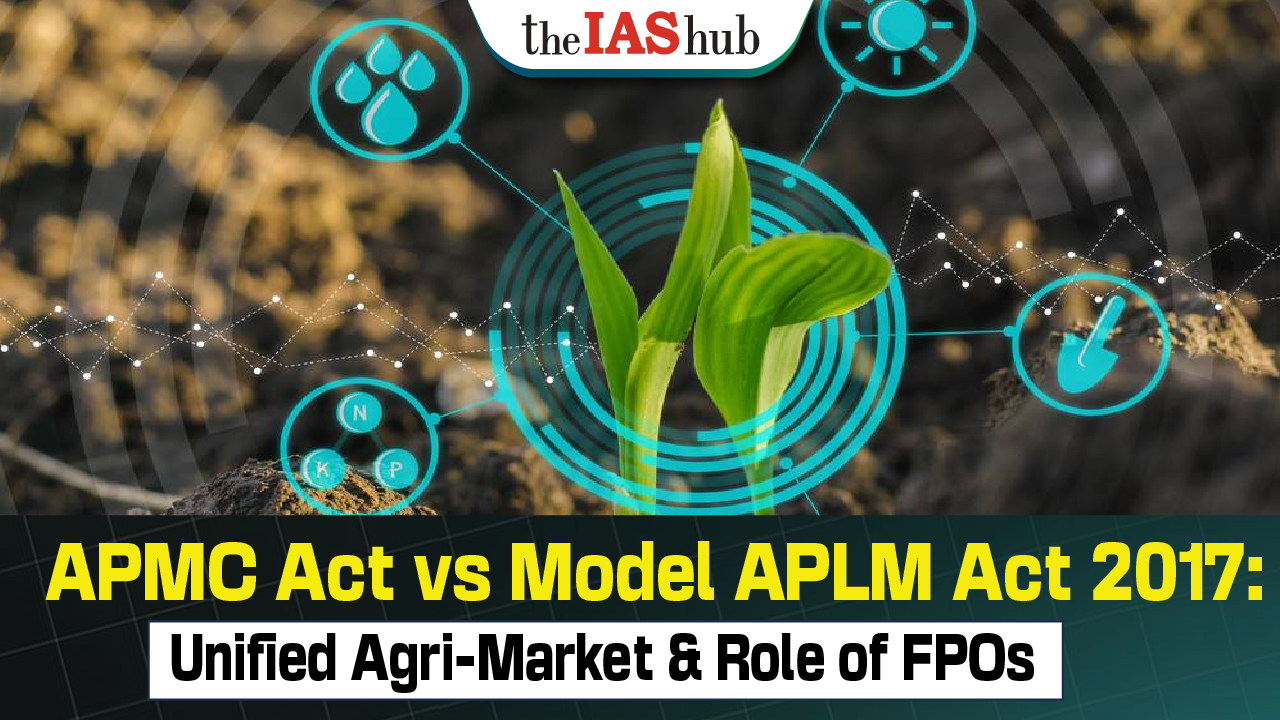The Model APLM Act 2017 reforms the APMC Act by creating a unified agri-market, ending market fragmentation, and empowering Farmer Producer Organizations (FPOs) to boost farmer income, access to markets, infrastructure, and fair pricing.


The Model Agriculture Produce and Livestock Marketing (Promotion and Facilitation) Act, 2017 (APLM act) was proposed in April 2017 to replace the APMC Act (Agricultural Produce Marketing Committee) 2003.As, this Act aims at developing a state-level unified market through acquisition of at least nine essential areas of rehabilitation.

The model APLM Act was enacted in 2017 with an aim to, liberalise agri-market by creating a single agri-market where with single licence one can trade agri-produce as well as livestock, set up a wholesale market at every 80 km, end the monopoly of APMC and allow more producers to set up markets and create a healthy competition so that farmers can accordingly discover prices and sell their produce.
agriculture Produce .

FPO has been considered as a way to boost agriculture income and manage the risk and vulnerabilities of farming and provide them with good bargaining power.


Refine your answer writing skills and elevate your UPSC preparation with personalized support and expert feedback.
Fill out the form to get started with the program or any other enquiries !








Are you dreaming of becoming an IAS officer? Then, IAShub can be your best guide. It is one of the Best IAS Coaching in Delhi. Many students who want to clear the UPSC exam join IAShub for learning. The institute gives both online and offline classes. Their teachers are experienced and helpful. They easily explain every topic. Students also get notes, tests, and tips to do well in the exam.
IAShub is in Delhi and is trusted by many UPSC students. It offers coaching for every part of the UPSC exam – Prelims, Mains, and Interview. The classes are simple and easy to understand. The teachers are experts and guide students in the right way. IAShub is also known for its helpful notes, test series, and answer-writing practice. IAShub is the best coaching in Delhi and also gives UPSC Online Classes. This helps students from any place in India to learn. The online classes are live and also recorded. So, students can watch them anytime. These classes cover the full UPSC syllabus.
Here are some important services provided by IAShub:
The UPSC Civil Services Exam has three parts:
This exam is tough, but with the right guidance, it becomes easy to manage. Students must study smart and stay regular.
IAShub supports students from the beginning to the end. It gives the right books, tests, and notes. The classes are easy to follow, and the teachers are always ready to help. Students get personal doubt sessions too. The test series and answer checking help students learn where they need to do better. Also, free study materials save time and money.
IAShub also guides students during the final stage – the interview. Experts take mock interviews and give useful tips. This full support makes IAShub one of the best IAS coaching in Delhi.